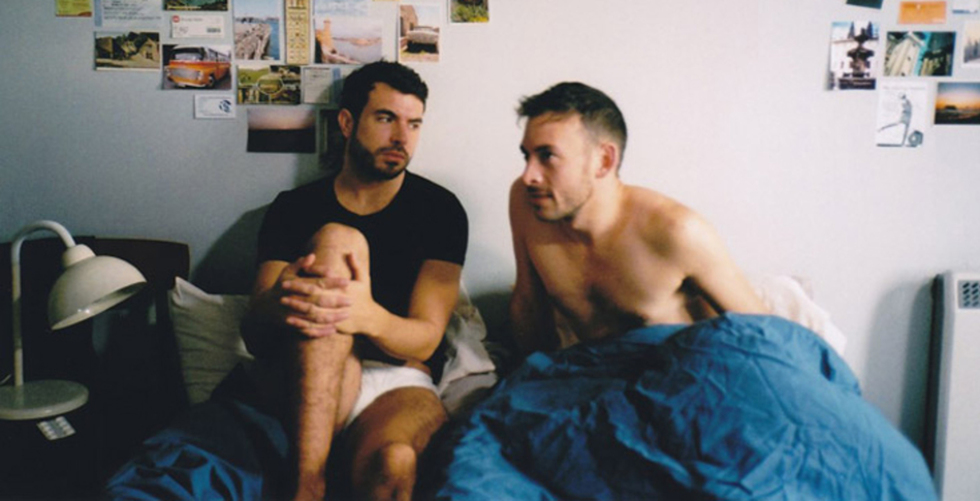
BY ZACHARY WIGON |
Banderas Sheds New Layers for Almodovar
Antonio Banderas, Pedro Almodovar, and Elena Anaya talk about their intriguing new film, The Skin I Live In.


The Skin I Live In, the sixth collaboration between Banderas and Almodovar, is hotly anticipated for that reason, amongst many others. Existing in the trademark Almodovar universe of high melodrama, perverted love and major narrative twists, the film boasts all of the atmospheric notes that have made Almodovar one of the most celebrated international auteurs. The film centers on a Doctor Robert Ledgard (Banderas), a twisted surgeon who keeps a woman (Elena Anaya) locked in his house, so that he may experiment on her, testing a synthetic skin that he has been working on. However, the relationship between Ledgard and his captive is not totally hostile – at times, it seems even romantic – and as more of their story is revealed, things start to get truly bizarre.
I sat in on roundtables with Banderas, Almodovar, and Anaya at a hotel in Manhattan recently. Below are excerpts from each of the conversations.

Question: This movie marks your first collaboration with Pedro Almodovar in 21 years. What was it like to come back together again?
Antonio Banderas: I am very close to this film. It’s difficult to be objective, but I have to tell you that when I first saw the film, I felt that Pedro had made me play notes of my own acting that I didn’t even know I had. It opened for me to understand another side of me, in terms of acting. It probably has to do with maturity, but with Pedro as well. My first idea was to go big with the performance, but Pedro said no, we are going to hold it back, be minimalist. He wanted the character to be minimalist, so we didn’t know what next step he was going to take. I resisted this in rehearsals a bit, but he totally convinced me. I did what any actor who works with Pedro Almodovar should do – I took a leap of faith.
All those movies that we did in the 80s, and with this time in the middle – I have to recognize that he made me play in a territory which I think is where creation is. Creation is not in the comfort of acting – Laura Linney once said to me, when you’re comfortable acting, you’re doing nothing. Creation is painful. When you feel insecure, it’s because you’re stepping in different territories of your personality as an actor, as an actor. So that’s what Pedro gave to me – he slapped me, big time, and made me wake up to that fact. I am very happy that that happened – not only for this film, but also because it made me reflect to what the source of my work should be in the years to come.
Question: The character is a villain, but at the same time, we’re meant to empathize with him to some degree. How did you go about playing him, bearing that in mind?
Antonio Banderas: Well, once we determined what the character should be about – we studied certain psychopathies – I remember, Pedro and I talked about this Austrian guy who had his daughter in the basement of his house for 21 years, he had six kids with her – you could write that in a script, no one would believe it, reality is way bigger than fiction – so when journalists approached his neighbors, they described him as a charming person – well-dressed, polite. But he had this second life, hidden. Almodovar told me that the character melts into society perfectly, he’s undetectable.
But I couldn’t establish a morality of the character, a judgment – it’s too much of a burden to play a whole arc of what the character is all about. So what I did is compartmentalize the character – I created pieces of a puzzle that I was not going to put together. Pieces I would give to Pedro for him to work with. That’s because of the natural way he asked me to perform the character – the character feels no guilt. What I tried to play in my mind was the image of a family doctor – someone who is not involved in what the story’s about.

Question: What was it like to work with Antonio Banderas again, after all these years?
Pedro Almodovar: What’s different is the role I gave him. What was the same was his disposition toward the work. And fortunately, he’s still an attractive man – this is what I needed for the character. I’m sure that his experiences in Hollywood have been totally different from what it means to go to Spain to work with me. The way he prepared for the work is very different. But I sent him the script and we talked, and he was enthusiastic about the character. He told me from the start, I’m putting myself in your hands, you can do it how you want. That was important for me, because I’d kept being friends with Antonio, but he’s a big Hollywood star now. He’s made very different films from this, so you never know. But during the shooting, he was absolutely the same person as who he used to be. The way he behaves with the rest of the crew, or with me – it’s exactly the same.
Question: What led to your interest in adapting the material into a film?
Pedro Almodovar: Well, I read the novel ten years ago on a plane. It’s a little book, very amusing. I was interested in the revenge – in the book, it centers on the revenge of the father toward the daughter’s rapist. This was around the time that the human genome was discovered, and everything was changing in that field. The theme of the new skin – it was a key for me. It took me far away from the novel, because that element was not in the novel. So over the next nine years, I would go back to the script, but I wasn’t satisfied with what I was writing. It was difficult to make it believable, or not gratuitous. It’s difficult, also, when inspiration comes from a book as opposed to something I’ve invented. So I wanted to make it believable, and make it a situation that I was more interested in.
Question: Tell us about how you go about changing the audience’s expectations in your twisting narrative.
Pedro Almodovar: The structure, it comes when you are in the middle of the process. I tried to create the narrative, and then afterward I thought that it might be interesting to start by presenting these characters as they make their life, day by day, in a quotidian way. It’s weird, it’s like a Buñuel movie. But they live like this. Their routine is totally normal to them. When the character dressed in the tiger costume appears, then you’ve got a twist.

Question: This is an amazing performance, because, without spoiling anything, let’s say that you’re playing multiple characters. How did you look at the character when you were given the script?
Elena Anaya: That’s what I asked Pedro. I said, you’re offering me this script, but who acts so well? I was like, oh my God. He said, you need to cheat deep very well – you need to cheat Dr. Ledgard, and you need to cheat the audience. I don’t want the audience to know what you’re thinking. I don’t want you to wink at the audience. So he asked me to play the role with many layers, with one identity. It’s just one human being. I have to play that role knowing exactly what note to play in every scene, why every scene was written. I knew the action, I knew why my character was surviving.
Question: What was going on in your head during the process of creating the character?
Elena Anaya: So many things. But you have to stay focused. What really kept occurring in my mind was the idea of her extreme determination to survive. It’s so important for her to go back home. That idea was bigger than anything. That’s the power of the heart, it can allow humans to survive.
Question: What was it like, to watch Antonio and Pedro working together again?
Elena Anaya: Antonio was back home, back to the family, yeah. I was waiting like an audience member, to watch this again, after Tie Me Up! Tie Me Down! I had to move my jaw up because it was open so much. It was incredible, to see the process. There’s a song that goes twenty years is nothing, and it’s true. They sat down, and it was like they just finished the last movie they did together. They understand each other so well. They were dying to work together again.
The Skin I Live In is now playing. Find tickets.